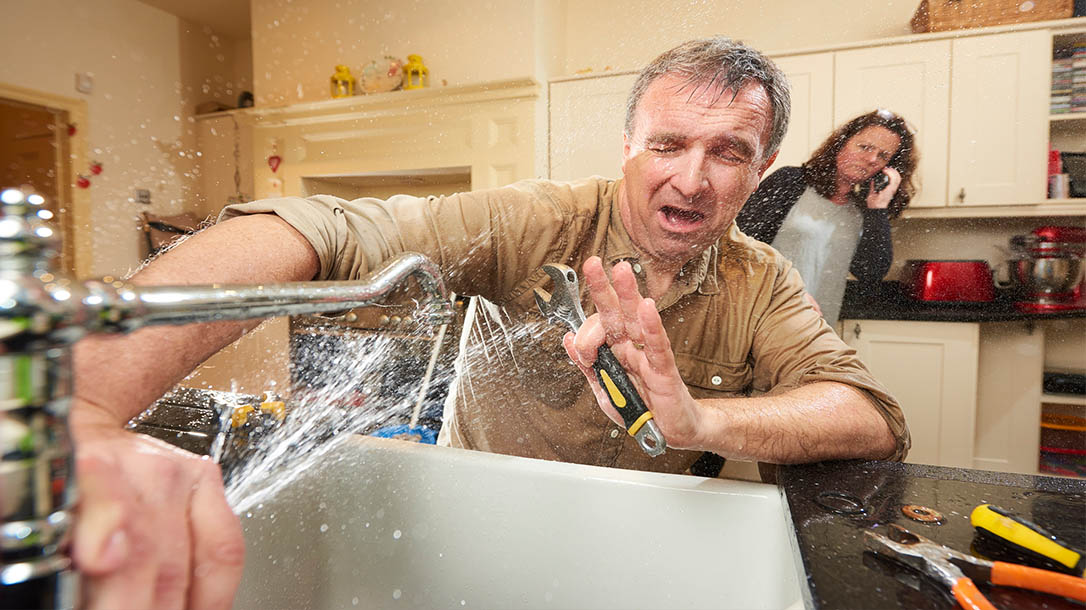Exploring the Value of Resolving a Broken Faucet
Exploring the Value of Resolving a Broken Faucet
Blog Article
Are you currently in search of information and facts around Leaky Faucets: Why They Happen & What to Do About Them?

Leaking faucets might seem like a small trouble, however their impact surpasses simply the nuisance of the noise. From wasting water to sustaining unnecessary financial prices and health and wellness risks, overlooking a leaking tap can cause various effects. In this short article, we'll look into why it's vital to address this typical household problem without delay and properly.
Wastefulness of Water
Environmental Impact
Dripping taps add dramatically to water waste. According to the Environmental Protection Agency (EPA), a single faucet trickling at one drip per secondly can squander more than 3,000 gallons of water each year. This not only pressures water resources yet additionally impacts ecosystems and wild animals dependent on them.
Step-by-Step Overview to Fixing a Dripping Faucet
Devices Required
Prior to trying to fix a leaking tap, gather the essential tools, including a flexible wrench, screwdrivers, substitute parts (such as washers or cartridges), and plumber's tape.
Typical Tap Issues and Their Solutions
Recognize the type of faucet and the particular problem creating the drip. Usual problems include worn-out washing machines, rusty shutoff seats, or malfunctioning O-rings. Refer to producer instructions or on-line tutorials for detailed advice on repair services.
Financial Expenses
Increased Water Bills
Beyond the ecological influence, dripping taps can inflate water bills substantially. The accumulated wastefulness gradually equates right into greater energy expenditures, which can have been prevented with prompt fixings.
Possible Property Damage
Additionally, extended trickling can bring about harm to components and surface areas surrounding the faucet. Water buildup can cause discoloration, corrosion, and even structural concerns if left unattended, causing added repair work prices.
Wellness Worries
Mold and Mildew Development
The consistent visibility of wetness from a dripping faucet produces a suitable setting for mold and mold development. These fungis not only endanger interior air high quality however also position health and wellness risks, particularly for people with respiratory system conditions or allergic reactions.
Waterborne Diseases
Stagnant water in leaking faucets can become a breeding place for bacteria and other virus, enhancing the risk of waterborne illness. Impurities such as Legionella microorganisms grow in stationary water, potentially leading to severe illnesses when ingested or inhaled.
DIY vs. Expert Repair
Pros and Cons of DIY Repair Work
While some may attempt to deal with a leaking tap themselves, do it yourself repair services feature their own set of challenges. Without proper understanding and tools, DIY attempts can worsen the concern or bring about insufficient fixings, extending the problem.
Advantages of Hiring an Expert Plumber
Working with a professional plumber ensures that the underlying root cause of the dripping tap is resolved efficiently. Plumbing technicians possess the knowledge and devices to diagnose and repair tap problems effectively, conserving time and decreasing the risk of further damage.
Environmental Duty
Private Payment to Conservation
Taking duty for taking care of trickling faucets lines up with broader efforts toward water preservation and ecological sustainability. Every person's actions collectively make a considerable impact on maintaining priceless sources.
Lasting Living Practices
By focusing on prompt repair services and adopting water-saving behaviors, individuals contribute to lasting living practices that profit both existing and future generations.
Safety nets
Normal Upkeep Tips
To prevent leaking taps, perform regular maintenance such as cleaning up aerators, examining for leakages, and changing damaged parts without delay. Additionally, take into consideration mounting water-saving devices or updating to more reliable fixtures.
Importance of Prompt Repairs
Resolving dripping faucets as soon as they're discovered prevents more water waste and potential damage, ultimately conserving both water and money in the long run.
Effect On Home Worth
Understanding of Well-Maintained Residential Property
Maintaining a property in good condition, including resolving maintenance concerns like dripping taps, improves its viewed value and value amongst potential purchasers or occupants.
Impact on Resale Worth
Qualities with properly maintained plumbing fixtures, including faucets, command higher resale worths in the real estate market. Addressing trickling taps can add to a positive perception throughout residential property inspections and negotiations.
Verdict
Addressing a dripping tap exceeds simple benefit; it's an important step towards saving water, decreasing financial costs, and guarding wellness and home. Whether through do it yourself repair services or specialist assistance, doing something about it to take care of trickling faucets is a small yet impactful means to promote liable stewardship of sources and contribute to a healthier, more lasting future.
How to Fix a Leaky Faucet: Step-by-Step Repair Guide
A leaky faucet may seem like a simple annoyance, but if it's not fixed promptly, that leak could cost hundreds to potentially thousands. From water damage to mold, mildew, and high water bills, even a tiny leak can be catastrophic if left unattended. Damage like this can even affect the overall value of your home, so it's important to take the right approach for leaky faucet repair. You may need the help of a plumber in some cases, but we've got a few tips you can try on how to fix a leaky faucet before calling the pros.
Four Faucet Types
When you're learning how to fix a leaky faucet, the first step is knowing what kind of faucet you're working with! There are four common types.
Cartridge Faucets
Cartridge faucets come in one- or two-handled varieties. In one-handled cartridge faucets, hot and cold water combines in a single cartridge. In the two-handled versions, hot and cold water are controlled separately and mixed in the faucet.
Ball Faucets
Ball faucets have a single lever you push up and down to adjust the pressure and rotate to change the temperature. A slotted metal ball controls the amount of water allowed into the spout.
Compression Washer Faucets
They're the oldest type of faucet, but they're still used in many homes — especially older ones. Compression faucets have two separate handles that, when turned, raise or lower the washer that seals a water valve. This valve stops water from flowing through the faucet when it is turned off.
Disc Faucets
Disc faucets rarely need to be repaired due to their maintenance-free design. The water flow is controlled by two discs — the upper one raises and lowers against a fixed lower disc, creating a watertight seal. If your disc faucet starts leaking, you may need to replace the seals or clean residue buildup from the inlets.
Fixing a Leaky Faucet
Step 1: Turn Off the Water
Whether you're learning how to fix a leaky bathtub faucet or how to fix a leaky kitchen faucet, always turn off the water supply to your working area when you're fixing a leak. The last thing you want is a flood added to your list of things to fix.
Look for the shutoff valves below your sink or around the tub and turn them clockwise to stop the water flow. If your faucet doesn't have shutoff valves, you may need to turn off the water for the whole house. Check to make sure it's off by turning the faucet on. If nothing comes out, you're ready to start the repair.
Step 2: Take Apart the Faucet
How you disassemble your faucet depends on the type of fixture you have. You can use a flathead screwdriver to remove the caps on top of the handle or handles for cartridge and compression faucets. Inside, you should see handle screws. Unscrew these with a screwdriver to remove the handle.
Disc- and ball-style faucets will typically have an inlet screw near the handle, and removing that will reveal the interior of the faucet.
Detach the Valve Stem
For cartridge- and compression-style faucets, you'll see the inner valve stem or cartridge once you remove the faucet handles. If you have a compression faucet, unscrew the brass valve stem. If you have a cartridge faucet, pull out the cartridge. If your cartridge has been in place for a while, it may require some tools or extra force to remove it due to mineral deposits.
Examine and Replace Parts
Once you've removed the parts, check them out to confirm what needs to be replaced. You may see corroded rubber washers, O-rings, stems, or cartridges. On a ball-style faucet, check the seats and springs for damage.
If you need to repair a leaky disc faucet, check the inlet and seals on the lower disc.
Once you determine what parts must be replaced, visit your local hardware store. Bring the damaged parts with you to ensure you can purchase the correct components to replace them.
Clean Valves and Faucet Cavity
If you've removed a stem or cartridge, you may notice mineral buildup in the faucet's threads. Use white vinegar to clean the valve seat by soaking it for a few minutes, then scrub it away with a soft toothbrush and rinse with warm water. You can also clean the interior of the faucet in the same way.
Reassemble the Faucet
Once your faucet is cleaned and the required parts have been replaced, it's time to reassemble it. Put the pieces back together and slowly turn the water supply back on. Doing this slowly is crucial because too much initial water pressure can damage the new hardware you've just installed.
https://homewarranty.firstam.com/blog/how-to-fix-leaky-faucet

As a reader on Water Dripping from Faucet: Why and How to Fix, I was thinking sharing that chunk was mandatory. Remember to pause to distribute this article if you enjoyed reading it. I praise you for being here. Revisit us soon.
Report this page